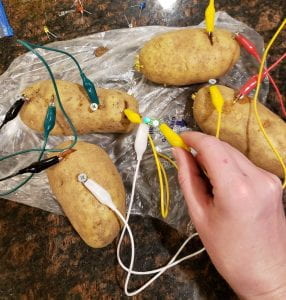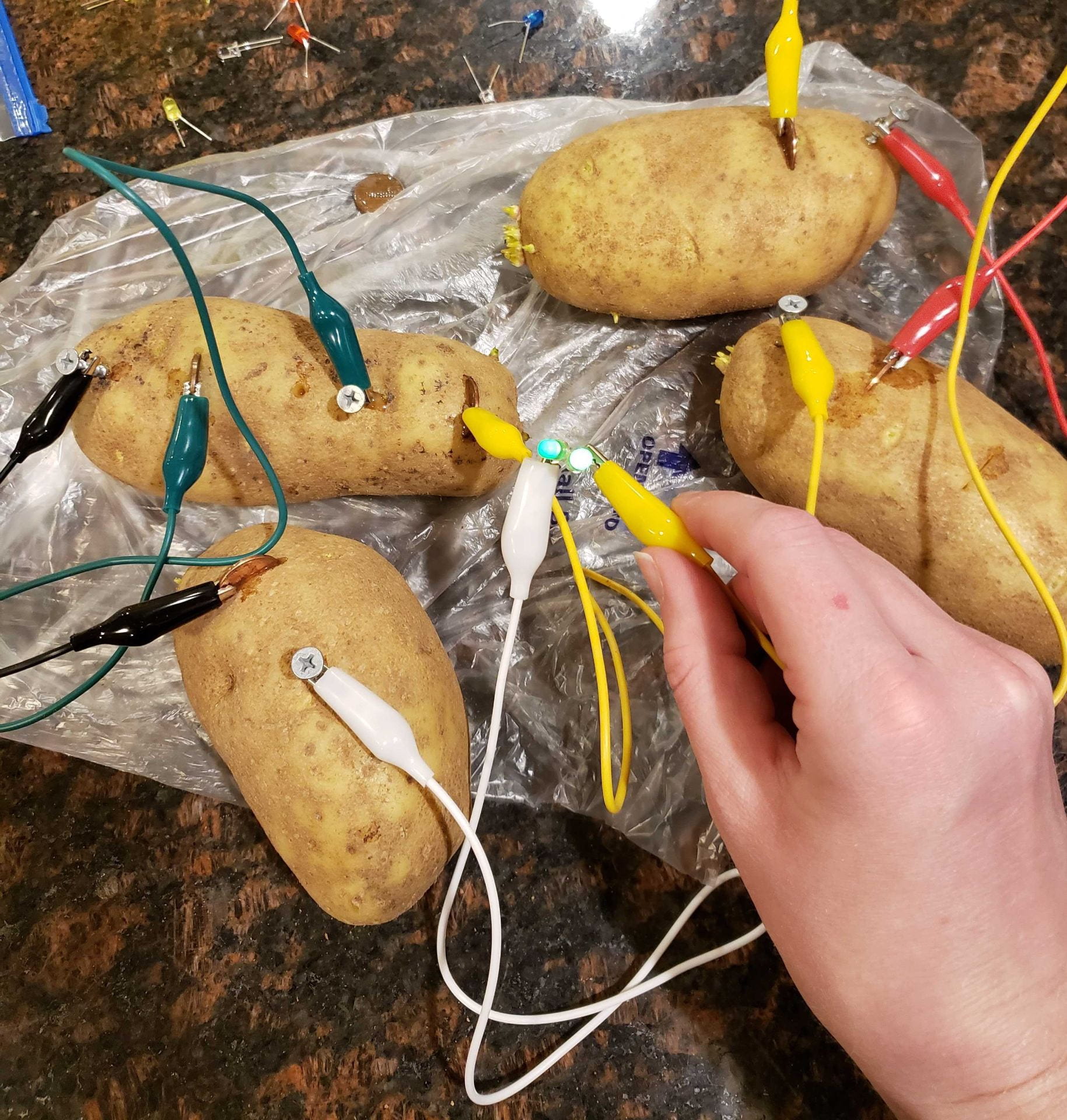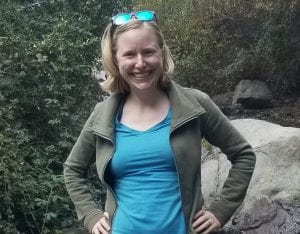By Laura Zeller, University of Illinois at Chicago
When the COVID-19 pandemic blindsided education in spring 2020, I was panicked and unsure how to move forward. I had to re-conceptualize my research and teaching. I was torn between the pull to teach in person and fear of the risk that would impose on my students and my family. As case numbers continued to increase, I steeled myself to teach remotely.
I was scheduled to teach Physical Systems in Earth and Space Science in fall 2020. The course is unique because it covers topics from physics, earth, and space sciences. This means that it pulls from two separate departments at the university, Physics and Earth and Environmental Sciences. Not only did I need to move to a remote setting, but I had the additional challenges of successfully moving diverse interdisciplinary content online.
The Urban Education students who enroll in the course typically go on to be elementary and middle school teachers in Chicago Public Schools. This means that our success in providing quality labs would not only affect our students but also students in their future classrooms. Students need laboratory experiences to build first-hand connections with the material. How could I do this with a virtual lab?
I had to shift my focus from adopting and adapting what had been done in past semesters to reworking the labs to be able to be done with groups of 24 students in two-hour, synchronous, online blocks. Working with an interdisciplinary team, we collaborated to develop newly redesigned labs. We took on the challenge and were able to design and implement ten labs, covering topics such as forces, how the sun moves across the sky, rock identification, electricity, and climate change. We learned a lot along the way. There are a lot of struggles and hardships for everyone associated with teaching during the Covid-19 pandemic, but there are also opportunities for learning and change. These are some of the lessons learned from this experience.
One of the lab students were able to do at home was a circuit lab using potatoes as batteries to light different colored LEDs.
Having a diverse, committed team is invaluable.
Since this course was interdisciplinary, the teaching team consisted of myself as the physics instructor, a professor from the Earth and Environmental Sciences department, one teaching assistant (TA) from each department, and two undergraduate peer leaders who had previously taken the course. This gave us diversity in terms of subject expertise, creating the unique opportunity to have perspectives from both experts and people less familiar with the material of each lab during design.
As a team, we decided the topics of all the labs and then assigned a lead to design each lab based on our differing expertise. Once the labs were written, the TAs tested the labs out with our peer leaders and the instructors and TAs went through the labs together. This process of writing, testing, and reviewing was made possible by the size and diversity of our team through our different perspectives on the material and its accessibility to students.
As a team, we made decisions on what to inevitably cut from the labs due to time constraints (see lesson 3), clarified instructions, and prepared all the materials the students needed to engage in each lab. The combination of experts on each topic and people who had never done the types of activities before allowed us to see the labs both from the perspective of students and with the understanding of what was important to get across in each lab.
For example, one of the TAs had never done a rock identification lab before and it had been a very long time since I had done one. Therefore, when we were testing out the rock identification lab, the two of us tried to follow the directions and were able to speak to what needed to be more explicit in the materials or where students might struggle and need support. This was especially useful because even though the others had taught a rock ID lab before, they had not done it online and were able to test using cameras and images for sharing rocks.
The combination of physics, Earth science, planetary science, and education backgrounds within our group combined to create a powerful team. It also made it more possible to see where the instruction or materials lacked support for student success. We were there to support and encourage each other and our different backgrounds complemented each other to provide quality labs.
Being forced online created an opportunity to move our teaching forward.
Since the old labs for the class required equipment that we could not provide for students at home, we had to find new, online resources for data collection or inexpensive lab kit materials. This also meant we had an opportunity to shift the style of the labs.
Having the lab redesign task thrust upon us meant that we could also work on shifting labs away from cookbook type labs where students are asked to complete the experiments without fully making sense of what they are doing. When I designed the framework for the newly designed labs, I used ideas of the Science and Engineering Practices from A Framework for K-12 Science Education and instructional strategies from Modeling Instruction. I wanted us to design labs that got our students collecting, making sense of, and forming conclusions using authentic data as a scientific community.
There were many challenges with adapting our instruction to be online and we had to change more than we normally would have, but we decided to use this as an opportunity to improve the labs. By taking up the challenge of redesign, we moved our labs to become more about student sense-making and less about filling in answers.
Online labs take more time to both plan and execute.
When planning and implementing online teaching, all materials had to be well thought out and organized in an accessible and intuitive way. Without physical resources like whiteboards for in the moment sharing of information and student collaboration, we had to design other resources for impromptu collaborations. There were a lot of materials and logistics that had to be worked out before online labs to keep small glitches or miscommunications from derailing the learning experience.
For each lab, we provided a lab document that the students filled in, a Google Slides deck set up for student collaboration and presentation, and introduction lecture slides. All of these documents had to be clear and user friendly. This took extra time to put together with all the correct links to data sources and instructions.
In each lab, we designed a learning experience for students that included engaging with a phenomenon, analyzing and/or modeling it, communicating about it, and then reflecting on their learning. We used a mixture of hands-on materials (for example air pucks (shown below), moon and Earth balls, potato circuits (see cover image)), and online data analysis from different sources (e.g. PIVOT interactives, (shown below) Stelarium (shown below) PhET simulations). We used PIVOT interactives for the physics and climate labs because it offered remote student control over data collection while still looking at real-world data.
 This is a screenshot from Stelarium, free online software that shows views of the sky from all over the world at any date or time. It made it possible for our students to conduct observations of the movements of the moon and sun across the sky over many days and explore phenomena like the midnight sun.
This is a screenshot from Stelarium, free online software that shows views of the sky from all over the world at any date or time. It made it possible for our students to conduct observations of the movements of the moon and sun across the sky over many days and explore phenomena like the midnight sun.
PIVOT interactives gave us an opportunity for students to collect data using video analysis tools. This is one of the videos we used to have students explore graphing motion.
All the different technologies for data collection and tasks also meant that more time was lost in transitions. Moving students to breakout rooms, having students load and figure out the interfaces, all took extra time. Many of these activities have in-person equivalents, like getting to know how to use the equipment, but each of these tasks is made more difficult when everyone is isolated and interacting with things independently.
Every lab we found ourselves cutting things out in the design process and yet still struggling to get through all the planned activities. As the semester progressed, we got better at gauging how much we could accomplish in a two-hour lab, but it was always a struggle to decide what to cut from our original designs.
Connecting to the real world and to the students’ future careers helped create human connections and a sense of caring while learning online.
One of the struggles we faced was trying to connect with our students on a human level and communicate care for our students while teaching remotely. In our lab design, we specifically focused on relating to the real world and our students’ future classrooms. Building connections between the disciplines of science and education turned out to be a strong piece of how we created relevance and communicated care for our students.
Motivating our design was that providing a quality learning experience for future teachers is especially important because their science learning affects the science learning of their future students. For example, research has demonstrated that elementary teachers who did not get quality lab experiences often compensate by avoid hands-on experiences and minimizing science coverage. It turned out that building connections between the material and students’ lives also helped build community in our class.
We designed the labs to connect to phenomena that students interact with and could utilize in their future classrooms. When selecting materials for the lab kits, we picked materials that the students could later use in their classrooms. This included moon and Earth stress balls to modeling phases of the moon and mini air pucks for examining motion and forces. This provided some hands-on components of the labs. Through these phenomena, our students were able to see how our class connected them to the world and each other.
In the labs, we included reflection questions where we asked students to talk about how they might apply what they learned in their future classrooms. These connections and tailoring of the science content to the specific audience of future educators helped make our students feel welcome and included in the world of science. Multiple students reflected at the end of the semester that they felt more positive about science because of the class. We were able to make science more accessible and relevant to our students by supporting them in an interdisciplinary way that looked at science through the lens of their future teaching.
This air puck was included in the lab kits. We used it to have students make hands-on observations for the study of motion and forces. It is also a valuable science demonstration tool they can use in their classrooms.
In the end, we all got through the semester completing ten new or redesigned labs along the way. Was it easy? No. Did we feel like our work made a difference and the semester wasn’t totally lost? Yes. We worked hard and our students worked hard. At the end of it all, we were all exhausted and ready for a break. But now, as I look back on the semester and what we accomplished, I know we did our best for our students and learned from the experience ourselves.
Our course team brought together interdisciplinary expertise to take on the challenge of moving physics, space, and earth sciences labs online. We found an opportunity in the challenge to push ourselves to improve the learning of our students and not just adapt, but also enrich the lab experiences. This was time intensive and we were not able to do everything we had hoped, but through the focus on real-world phenomena and our students’ future teaching, we were able to build a positive community in our class. I hope that we will teach in person soon, but as we continue forward, I encourage you to consider the opportunities and lessons this challenge presents.
About the Author:
Laura Zeller is a Ph.D. Candidate at the Learning Sciences Research Institute at the University of Illinois at Chicago. Before becoming a researcher, she taught high school physics for 6 years. She researches science teacher learning and how patterns of practice are supported in science classrooms. You can find her by email (lzelle2@uic.edu) or on Twitter (@physicsedu2).
Acknowledgments:
I would like to thank the instructional team: Stefany Sit, Ph.D.; Alister Cunje; Sam Tempel; Ummie Ansari; and Mahogany Lawson. This work could not have been completed without the whole team, and I am very grateful for the chance to work with all of them.
“The material contained in this document is based upon work supported by a National Aeronautics and Space Administration (NASA) grant or cooperative agreement. Any opinions, findings, conclusions, or recommendations expressed in this material are those of the author and do not necessarily reflect the views of NASA. This work was supported through a NASA grant awarded to the Illinois/NASA Space Grant Consortium.”


